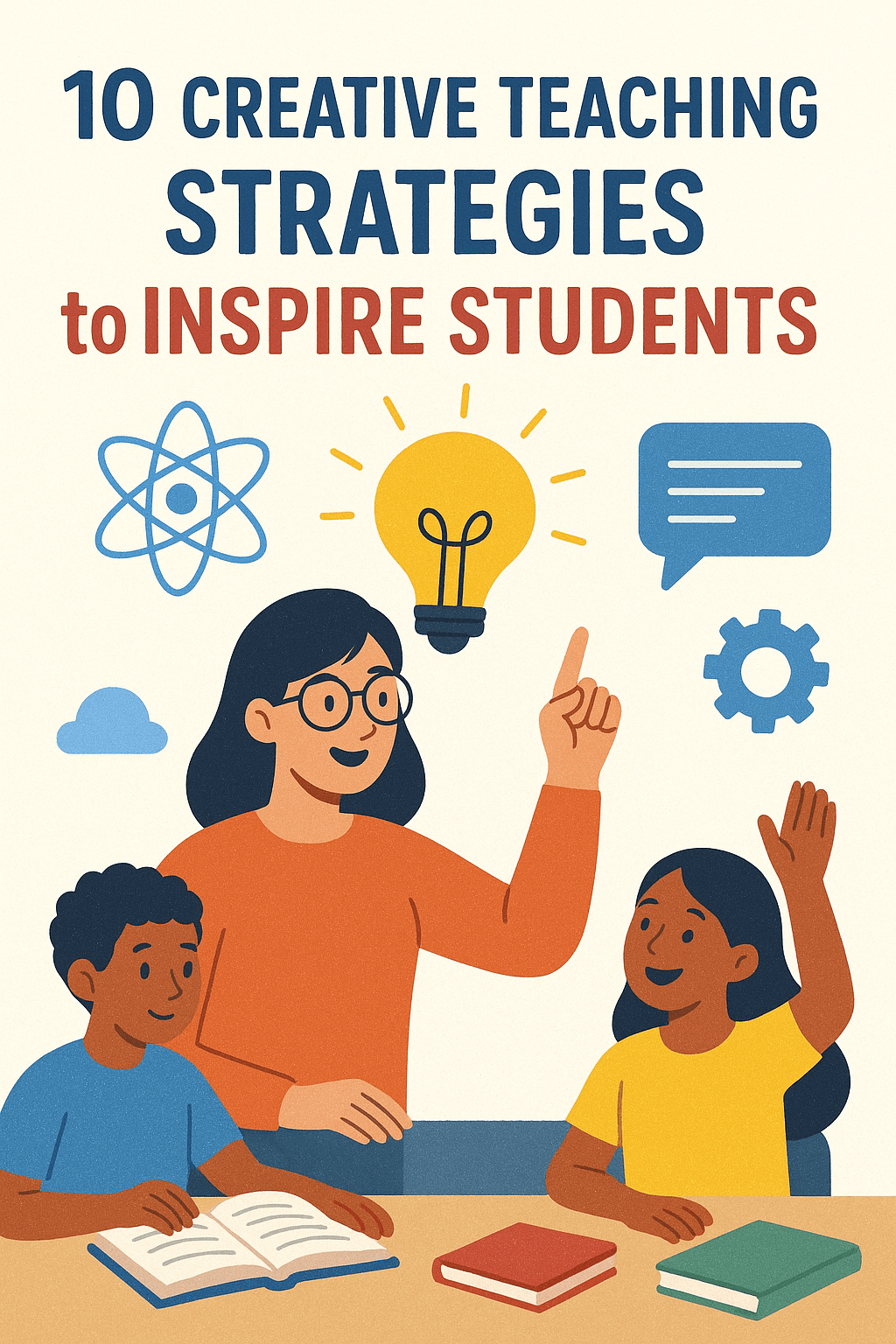Walking into a classroom where students are locked in their conversations, wasting time on doodling, staring out the window, or performing five additional tasks is not meaningful in any way. Sounds familiar? That’s a very common scenario teachers face every day, and they have no clue how to engage them in more productive activities.
In reality, students do want to learn, but the lesson plans and classroom environment are simply so boring that they are easily distracted. Basically, they crave more than just lectures, worksheets, and poor presentations. If you want them to feel the wave of excitement in their mind, you’ve got to stay away from conventional methods and think of something innovative.
Well, the good news is you no longer have to flip the classroom upside down to make it completely engaging. Instead, small, meaningful changes can have a big impact on students, and you will see results soon. Stop wasting time researching creative ideas that can engage students in your learning, because we have compiled them for you.
Before digging right in, let’s take a deeper look at how we can make learning more interesting for students without making it a burden for the teacher.
Proven Strategies to Make Learning Fun and Engaging
Every student’s nature is different, and their pattern of understanding or gauging your words is unique. Since they work on different frequencies, keeping each one of them curious and attentive in the classroom is a bit more difficult. But we know one thing that always works, a personalised approach.
For example, a healthcare teacher might guide students individually or suggest using a medical personal statement writer to help those who struggle with expressing ideas.
Keeping a tailored approach with a mix and match of our proven strategies will bring you closer to your closing line. Below, we have gathered ten practical and workable methods that will not only keep learners attentive but will also inspire them to take part in the conversation with fun:
Introduce Project-Based Learning
Everybody knows you remember things far better if you perform them rather than just hearing or reading about them. Because it works like magic, you should always include projects in the syllabus. By doing so, you are giving students a chance to learn more effectively by creating, exploring, and experimenting.
Say no to passively taking notes because they’re never going to remember them. But something they have done by themselves will stay in their mind for a much longer time. Now the projects can be anything that involves them in the classroom lessons. Making a mini structure in the architecture class or proposing a solution in a business management lecture, you can plan any activity.
For Example:
In science class, students can test different samples of water to spark their curiosity.
Use Gamification in Lessons
Turning lessons into a game is a strategic move because who doesn’t like playing games? Gamification can make your class more fun and engaging. Adding elements like challenges and quizzes, where you get points, can transform your boring lecture into a friendly competition.
For Instance:
A maths teacher can assign points to each word problem and divide students into teams. The more they solve, their level will increase in terms of numbers. You can even introduce badges for a winning team, so they are more eager to win the game. Therefore, indirectly engaging in learning too.
Make Class Time More Interactive
Any classroom that is just a way of conversation is a complete failure. You should know that only when students get a chance to question and contribute are you successful in your plan. That can become a reality once you make your class interactive. Only with the interactive way of teaching can a quiet student get the confidence to speak their mind.
The best part is that you don’t need any fancy tools to bring it to life. Simple ways like group activities, open-ended questioning, and role-playing can make everything much lighter, even if the subject is boring.
Use Technology to Keep Students Interested
Using technology is surely an art, and if you ace its usage in teaching, your ordinary lesson will turn into a student magnet. Since they are surrounded by technology all the time, they will like to get engaged with it more naturally.
They already use gadgets and technology in their lives with gaming, etc. Just by changing the intent, you can make that usage productive. If you want your students to look forward to your next lecture, bring tech into the equation.
For Instance:
Introducing interactive presentations, online games, or brainstorming sessions on gadgets, and a discussion board are a perfect way to make any complex concept easier for students.
Encourage Collaborative Learning
Students learn best when they learn together. Collaborative learning gives them a chance to share ideas, challenge each other’s thinking, and build communication skills along the way. It creates a sense of community in the classroom, where learning becomes a shared experience rather than an individual task.
Wondering where to begin? It could be as simple as brainstorming, team challenges, peer feedback, etc. By doing so, they not only connect with the lesson but also build confidence to speak up in front of the crowd.
Use Storytelling as a Teaching Tool
Everyone loves a good story, and students are no exception. You love to listen to random anecdotes of people, and it is somehow interesting to hear without having any facts or a strong narrative to it. Imagine if you turned complex but interesting concepts into stories; how impactful could that be?
So, when a teacher explains something with a story format, it’s much easier for students to understand it. Moreover, you don’t have to be a novelist to make it work. Simply share your experiences and other supporting information to make it impactful.
For Example:
During a science class, telling a story behind a famous invention can make your topic like a narrative movie. Or, if you’re teaching healthcare students, sharing how SOAP note writing services help them organise patient cases can make the lesson more relatable and engaging.
Get Creative with Art and Visuals
Do you know that 85% of people are visual learners? That’s why your teaching approach should be visual. Sometimes seeing makes everything easy. Whether it’s a complex process or a timeline that you couldn’t comprehend, itexperiences and will become simple just by artwork or illustrations.
You can use diagrams, charts, videos, or even basic illustrations to map out the whole topic for students. As visuals activate different parts of the brain, not only will students understand it better, but the recall will be great, too.
For Example:
In a biology class, you can use a diagram of the human heart to show the different chambers, blood flow, etc.
Include Examples and Experiential Learning
Learning is much better when you can see a concept in action. This means sharing real-life examples makes students understand more easily. Instead of just sharing details on the topic, you can pull out a great example that sums up the whole concept. Whether you choose to give examples or try to involve them in experiential learning, it works wonders.
Critical Thinking Exercises are a Must
Giving students questions and presenting answers on a platter won’t reap any benefits. Students need to figure things out by themselves. This is where critical thinking comes into the picture. You simply need to ask questions and let them find answers independently.
For Example:
Brainstorming sessions are a great way to inspire ‘what if’ questions in their minds.
Personalise Learning Experiences
As mentioned earlier, every student is different, but recognising it solves half the problem. You can make a huge difference in their learning capability by simply tailoring your learning strategy according to their interests.
For Instance:
Some students learn things better with visuals, while others may need a storytelling method to fully grasp a topic.
Your Quick Guide to Engaging Learning
| Strategy | Quick Example | Main Benefit |
| Project-Based Learning | Small class experiment | Hands-on understanding |
| Gamification | Quiz game | Boosts motivation |
| Interactive Class | Group discussion | Active participation |
| Technology | Short video or app | Keeps attention |
| Collaborative Learning | Pair work | Teamwork |
| Storytelling | Relatable story | Memorable learning |
| Art & Visuals | Diagrams or posters | Sparks creativity |
| Experiential Learning | Real-life example | Connects theory to practice |
| Critical Thinking | Problem-solving | Builds reasoning |
| Personalised Learning | Approach adaptation | Motivation & confidence |
Final Words
Keeping students engaged is surely one of the biggest challenges teachers face. But by using creative strategies, such as project-based learning, storytelling, collaborative activities, and personalised lessons, you can transform your classroom into a space where students are active, curious, and interested in learning.





